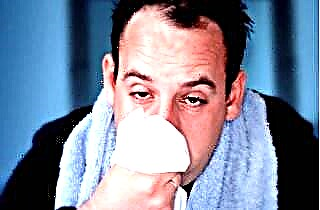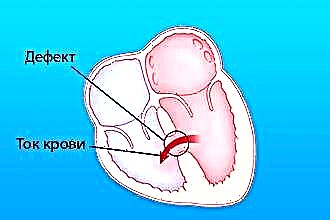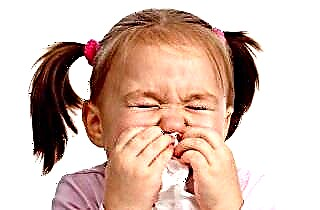Cough rubbing can be used for both small and adult patients. Stimulation of blood supply and valuable components of the applied funds will help to quickly overcome the disease that caused bronchospasm. Relief of the patient's condition is observed already 2-4 days after the start of therapy. To avoid unpleasant complications, you need to take into account all the features of the procedure and choose the most suitable ointments and natural products for its implementation.
What is the secret of recovery?
 Cough rubbing has been used for many years. The procedure has a beneficial effect on the body, as light massage promotes overall health. Also, medicinal substances that are part of the rubbing agents have an unusually powerful healing power. These can be biologically active components of plant, animal and chemical origin.
Cough rubbing has been used for many years. The procedure has a beneficial effect on the body, as light massage promotes overall health. Also, medicinal substances that are part of the rubbing agents have an unusually powerful healing power. These can be biologically active components of plant, animal and chemical origin.
Ointments and mixtures have the following effect:
- give a warming effect;
- stimulate blood circulation;
- improve metabolism at the cellular level;
- strengthen the immune system;
- increase vitality;
- facilitate expectoration;
- thin out phlegm and promote its excretion;
- fight infections;
- have a calming effect.
Rubbing recommendations
 Rubbing with medicinal ointments must be performed correctly in order to achieve the desired effect and not harm the body. Healing agents are applied to the skin in a thin layer and rubbed gently with your fingers, making circular movements in a clockwise direction. It is forbidden to hit, pinch or press hard on the patient's skin. Rub the following body parts:
Rubbing with medicinal ointments must be performed correctly in order to achieve the desired effect and not harm the body. Healing agents are applied to the skin in a thin layer and rubbed gently with your fingers, making circular movements in a clockwise direction. It is forbidden to hit, pinch or press hard on the patient's skin. Rub the following body parts:
- chest (except for the area of the heart and nipples);
- back;
- Feet.
After the procedure is completed, the patient should be dressed in warm pajamas and wrapped in a blanket. The patient remains in this position for at least 2 hours. A cough rub is done a maximum of 3 times a day, it will work best if the patient immediately goes to sleep. Prolonged exposure to warmth will allow the patient to sweat well.
Do not rub the skin in the first days of the disease. It is in the midst of infectious ailments that the body temperature rises. This procedure can aggravate the situation as it is aimed at warming the patient.
You should start treatment on the 4-5th day of quarantine or at the moment when the cold is just beginning and has not yet had time to cause a fever.
Grinding fat
Natural fat is widely used in folk medicine. It has a very high biological activity, since nutrients in animals accumulate in the interior fat. Lard is best purchased from hunter-purveyors, in extreme cases - in a pharmacy. However, be careful with pharmaceuticals, as they may contain impurities that are harmful to your health. Consider how fats of different origins act on the body when coughing.
| Type of fat | Benefits in treating cough |
| Badger | Increases immunity, enhances blood circulation, warms, contains vitamins A and B, amino acids and trace elements that are useful for the body. |
| Goat | The fat contains vitamins A, B, E, C and D, the agent improves blood flow and metabolic processes, stimulates sputum discharge, healing of damage on the bronchi, and increases the body's resistance to infections. |
| Bearish | Contains vitamins, amino acids, minerals and other useful substances, relieves inflammation, significantly increases local and general immunity, and prevents complications. |
| Mutton | Perfectly warms and retains heat for a long time, thinns phlegm and removes it from the respiratory tract, relieves inflammation and edema. |
| Goose | Used as an expectorant, it stimulates a gentle and effective sputum discharge. |
To grind a patient with fat, you must first melt the lard. Some products have a fairly low melting point, they just need to be kept at room temperature for a while. Other products should be brought to a liquid consistency by heating.
Never use a microwave oven, open fire or electric stove - at temperatures over 40ᵒ, almost all animal fats lose their medicinal properties. It is better to warm up the lard in a water bath.
Medications
 The products sold in pharmacies are also highly effective. They contain plant and animal components, as well as chemicals that contribute to the rapid treatment of coughs. When choosing such drugs, you should carefully study the composition in order to avoid an allergic reaction. Most often, such ointments are prescribed for grinding:
The products sold in pharmacies are also highly effective. They contain plant and animal components, as well as chemicals that contribute to the rapid treatment of coughs. When choosing such drugs, you should carefully study the composition in order to avoid an allergic reaction. Most often, such ointments are prescribed for grinding:
- "Badger";
- "Bear";
- "Doctor Mom"
- Doctor Theis;
- Pulmex.
Folk remedies
In addition to massage with the use of fat, there are other methods of rubbing in folk medicine that can help heal a cough. As ointments, you can use products that have antibacterial, warming, immunomodulatory, expectorant and anti-inflammatory properties. Let's consider some of them and their features.
 Honey. Cough rub with honey is the oldest remedy for fighting colds. It is best to use a liquid beekeeping product warmed up to body temperature. It is rubbed into the skin with gentle movements, after which the patient is put on warm underwear and socks and left under a blanket. Honey has anti-inflammatory, immunostimulating and warming effects.
Honey. Cough rub with honey is the oldest remedy for fighting colds. It is best to use a liquid beekeeping product warmed up to body temperature. It is rubbed into the skin with gentle movements, after which the patient is put on warm underwear and socks and left under a blanket. Honey has anti-inflammatory, immunostimulating and warming effects.- Camphor oil. Warm the agent to 37ᵒC and rub it on the patient's chest and back. You can additionally put mustard plasters, this will enhance the effect of the procedure. The oil perfectly warms, disinfects and relieves inflammation. You can also mix it with turpentine in a 2: 1 ratio to improve coughing.
- Butter. Fatty butter can be used on its own or combined with other medicinal products. Keep the oil at room temperature to make it soft and pliable. After rubbing in the medicine, cover the skin with polyethylene, this will enhance the warming effect.
Precautionary measures
Using natural or pharmaceutical rubbing agents, it should be remembered that they all have contraindications. Each specific drug is characterized by a separate set of risk factors, we will consider only the main ones:
 intolerance to the components;
intolerance to the components;- children's age up to 1 year;
- skin infections;
- acute and chronic inflammatory processes in the treated areas;
- the presence of bruises and bruises at the sites of rubbing;
- enlargement of the cervical and supraclavicular lymph nodes;
- active tuberculosis;
- osteomyelitis;
- bleeding tendency;
- acute cardiac pathologies.
Let's summarize
Rubbing the feet, chest and back gives a good therapeutic effect if the patient has no contraindications to the procedure. You can use any folk and pharmaceutical remedies for massage only after consulting a doctor, since some of them can harm the body.
In order for the treatment to give the desired result, it is worth following all the doctor's prescriptions and following the recommendations for rubbing against coughs.

 Honey. Cough rub with honey is the oldest remedy for fighting colds. It is best to use a liquid beekeeping product warmed up to body temperature. It is rubbed into the skin with gentle movements, after which the patient is put on warm underwear and socks and left under a blanket. Honey has anti-inflammatory, immunostimulating and warming effects.
Honey. Cough rub with honey is the oldest remedy for fighting colds. It is best to use a liquid beekeeping product warmed up to body temperature. It is rubbed into the skin with gentle movements, after which the patient is put on warm underwear and socks and left under a blanket. Honey has anti-inflammatory, immunostimulating and warming effects. intolerance to the components;
intolerance to the components;

